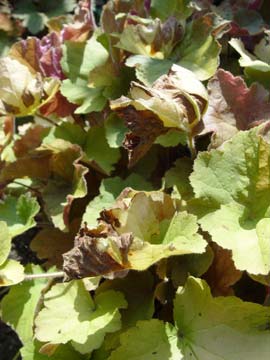 Water can make the difference between a summer-planted plant that lives and one that dies.
Water can make the difference between a summer-planted plant that lives and one that dies.
George Weigel
Summer isn’t as ideal of a time to plant as spring or early fall, but with a few precautions, most plants will do fine. Peak sunlight and searing heat are added stressors on young plants with small roots, not to mention, summer soil tends to be drier. The best way to counteract these complications is with regular watering. Damp soil can make the difference between plant life and death – especially during the first two months after planting.
How often to water?
Summer-planted annual and perennial flowers benefit from soakings every two or three days, since their roots are small and near the soil surface. Newly emerged grass also appreciates a drink once or twice a day.
Trees, shrubs and evergreens planted in summer benefit from deeper soakings every five to seven days. Since their roots are bigger, they don’t need water quite as often as smaller plants, but they do need enough to dampen the soil to the bottom of the root ball.
 Wilted leaves are usually a sign that a plant isn’t getting enough water. It’s common soon after a summer planting.
Wilted leaves are usually a sign that a plant isn’t getting enough water. It’s common soon after a summer planting.
George Weigel
Mix an organic plant fertilizer into the soil at the first watering to add micronutrients that help plants overcome the stress of transplanting.
Adequate soil moisture ensures that leaves and branches can replace the moisture being lost to hot, dry summer air.
The hotter and drier it gets, the more moisture plants lose, and the more important it is to stay vigilant with the hose. Plants also lose more moisture on windy and sunny days than on calm, cloudy and humid ones.
Planting time makes a difference
Increase summer-planting odds even more by planting in the evening. That gives plants a half-day to acclimate before facing the bigger challenge of late morning to late afternoon.
Planting on a cloudy day is also less stressful than planting on a sunny day. All the better if that cloudy spell is followed by a day or two of rain.
 Besides wilting, plants not getting enough water often start curling and browning around the edges.
Besides wilting, plants not getting enough water often start curling and browning around the edges.
George Weigel
Container-grown plants – the way most plants are grown these days – are better adapted to summer planting than field-grown plants that are dug and wrapped in burlap for sale. Growers often won’t even dig field-grown plants in the heat of summer due to decreased success rates.
After the initial planting, summer-planted plants shouldn’t wilt. That’s a sign you’re likely not watering enough or often enough.
Too much water is also bad, although that’s far less likely to happen in the heat of summer. If your soil is poorly drained and you’re dumping on so much water that the soil is soggy, you could kill the roots from lack of oxygen.
A good way to determine if your soil is damp enough is to simply stick your finger into the ground next to the plants. If it’s already wet, no need to water. If not, get out the hose.